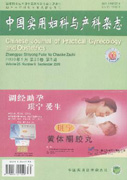Abstract:Postpartum hemorrhage is still the first factor of global maternal deathsl.Weakness of uterine contraction, placenta residue, soft birth canal injury,and coagulation function dysfunction are the common causes. BMI > 25.9 before delivery, anemia, palace high > 34.5 cm,age>35years, and scarred uterus are all the clinical early warning information of postpartum hemorrhage. In order to reduce the occurrence of postpartum hemorrhage, we should take timely targeted preventive measures to these pregnant women with high risks.

